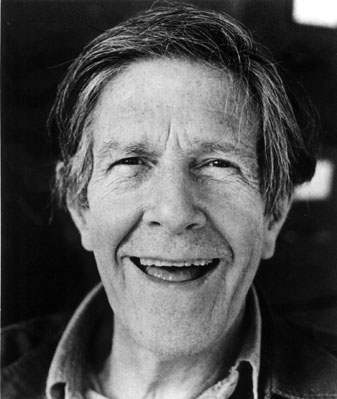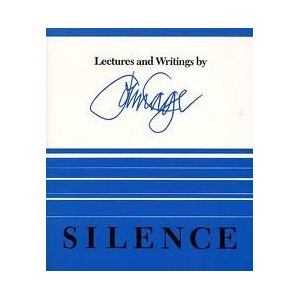John Cage would’ve been 100 today. He died in 1992, but his influence continues to echo through music. Many of the musicians on Echoes still cite Cage as an inspiration. As recently as yesterday on Echoes, Franco Falsini of Sensations Fix recalled hearing Cage in the early 1970s.
John Cage had this concept, “I wanted to put something on the piano so that when I hit the note that is different.” Okay, I figured that well I could do the same thing, but instead of modifying the piano, I could just put a distortion box, you know, and I’ve done the same. – Franco Falsini
Early this year, Hilary Hahn & Hauschka collaborated on the album, Silfra with Hauschka inserting everything from bottle caps and duct tape to chopsticks and vibrators into his piano strings. (You can hear their Echoes interview on September 10.)
You can’t listen to electronic music without thinking John Cage, whether it’s Brian Eno or Skrillex. And Eno, famously, recorded a Cage composition on his Obscure Music label.
Reading John Cage’s 1961 book, Silence, is one of those life changing experiences. You never hear sound the same way again. Cage realized you don’t need a piano, an orchestra or a rock band to make music. You just have to open your ears to the symphony of sound around you whether it’s the quiet of a zen garden or the cacophony of Times Square. I always loved a story I remember singer Joan La Barbara telling. When she was a young singer, she went to a Cage concert and she was so appalled by the cacophony that she confronted the composer at a post-concert reception.
You know, I was really young. There was so much going on; there were thousands of people in this place. I went up to Cage and I said, “With all the chaos in the world, why do you make more?” He was surrounded by all these people who just gasped. So I turned on my heel and marched back out into the melee. A few minutes later I felt a tap on my shoulder. I turned around and it was John. He was smiling and he said, “Perhaps when you go out into the world it won’t seem so chaotic.” -Joan La Barbara
LaBarbara went on to become a lifelong Cage devotee and recorded several of his works.
Silence is cited by composer John Adams as the turning point of his career. Steve Reich and Philip Glass cite it as a work that gave them permission to do anything, including the right to be repetitive and tonal. Brian Eno once called Cage “the most influential theorist … a completely liberating factor. ” Eno’s Oblique Strategy cards were his own adaptation of Cage’s I Ching chance operations.
Here’s an audio piece I produced as part of the Thoughts in Sound series.
I was fortunate to be able to interview John Cage back in 1988 for Totally Wired. It was subsequently published in Electronic Musician magazine where you can still find it on-line as Conversations with Cage.
Celebrate John Cage’s birthday today. Roll the I Ching. Turn off the iPod and open the window. Sit in the silence that is never silent.
There’s a few Cage videos at the end.
~© 2012 John Diliberto ((( echoes )))
John Cage on YouTube
John Cage on What’s My Secret? This is a riot for several reasons, including a union dispute over who can plug in the radios.
http://youtu.be/7KKE0f1FGiw
One of Cage’s most melodically beautiful, and oft recorded works, including an electronic version by William Orbit.
http://youtu.be/XF1DoVdHM9M
David Tudor performing Cage’s 4’33”
John Cage’s “Sonata V”
Stereolab’s “John Cage Bubblegum”



1 comment for “Sshhhhhhh. John Cage at 100.”